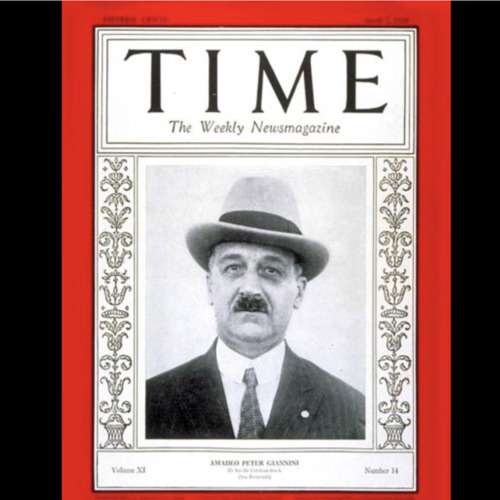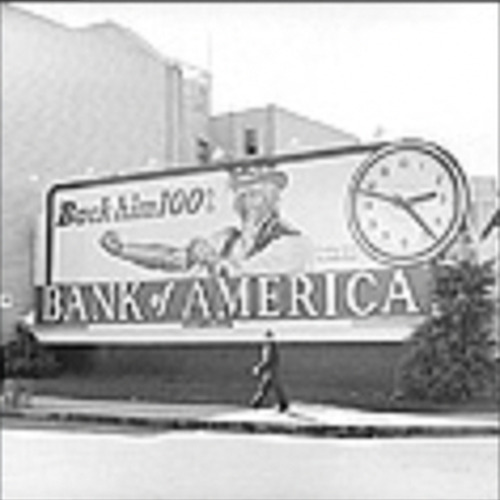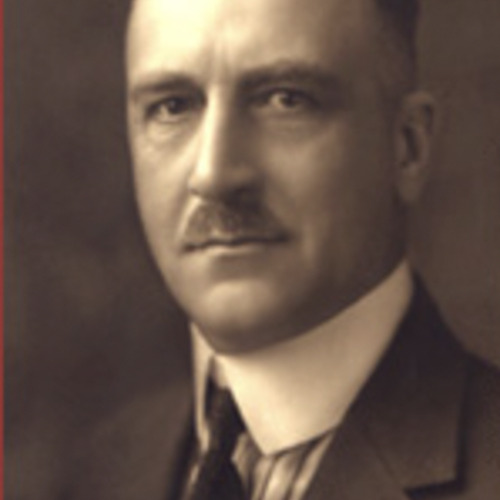Amadeo Peter Giannini
Amadeo Peter Giannini was a second-generation Italian who founded the Bank of Italy, which would soon become the Bank of America in 1904. Giannini’s commendable work ethic is especially evident in his ability to navigate and succeed despite racial injustices.
Giannini founded his bank after becoming angered by the standard practices of the banking world at the time. He witnessed banks directing their services solely toward wealthy clients and only doing business with individuals with substantial savings accounts. Like many of his fellow immigrants, he experienced difficulty securing bank accounts due to the stigma surrounding immigrants. As a result, in October 1904, Giannini founded his bank. An early billboard advertisement for his bank can be seen as a digital object below (“An early billboard for the Bank of America”). Giannini’s bank was especially geared toward ‘the little fellows,’ which he described as Italian immigrants, as well as other populations of immigrants present in the Bay Area at the time. Giannini had faith in immigrants and their descendants and did not view business with these groups as taking a risk. According to the PBS article ‘Who Made America,’ Giannini's faith paid off: “Within a year, deposits were soaring above $700,000 ($13.5 million in 2002 dollars)” (page 1). For context, that is about 23 million in 2024 dollars. Giannini quickly became popular among his clientele and gained a reputation for a lack of discrimination based on financial standing, instead discriminating on the basis of character. However, it would be naive to say that Giannini’s experience in the banking world did not come without encountering prejudices. He had to overcome many battles with New York bankers “who for many years saw him as the ‘spaghetti-eating’ enemy from California” (Fruner 1). Giannini experienced further prejudices due to his ethnicity when expanding the Bank of America into Los Angeles. He faced a slew of criticism with racist undertones by the press, who alleged that “Giannini was a member of the ‘Sicilian mafia,’ worked for the Pope, and planned to overthrow the American government” (Gatto 17). Even though Giannini was a part of this “model colony,” he still could not escape the prejudices that originated in the Italian colony of New York City. Despite this, Giannini continued to forge a name for himself, with his respectable ethical practices and reputable Bank of America speaking for itself and his character.
Giannini's work ethic was especially evident in the wake of the 1906 earthquake that devastated San Francisco. In the immediate aftermath, many businessmen and bankers were contemplating how to rebuild the city and their next plan of action. Giannini, however, saw this as an immediate opportunity. The day after the earthquake, he set up a temporary bank branch and immediately started collecting deposits and making loans. According to an article held at SCU Library titled “Finding Italy in San Francisco,” Giannini “set up with only a plank and two barrels, Giannini was able to satisfy withdrawal requests and make loans on a handshake to those looking to rebuild” (page 1). His confidence and faith that San Francisco would “rise from the ashes” inspired many San Franciscans. As a result of his confidence and courage in the face of disaster, Giannini is credited as playing a large role in the rebuilding of the city. Thus, rather unknowingly, Giannini proved to the people of the Bay Area just how impactful and beneficial hardworking Italians could be.
Giannini’s combination of openness, trustworthiness, faith, and loyalty to the city in which he started his business led him to become one of the most respected bankers in California and across the nation. “By the mid-1920s, he owned the third largest bank in the nation” (PBS page 1). Today, his legacy endures and lives on through one of the most trusted and respected banks in the country, the Bank of America—a bank not only worth 2.4 trillion dollars but also founded by a second-generation Italian.




